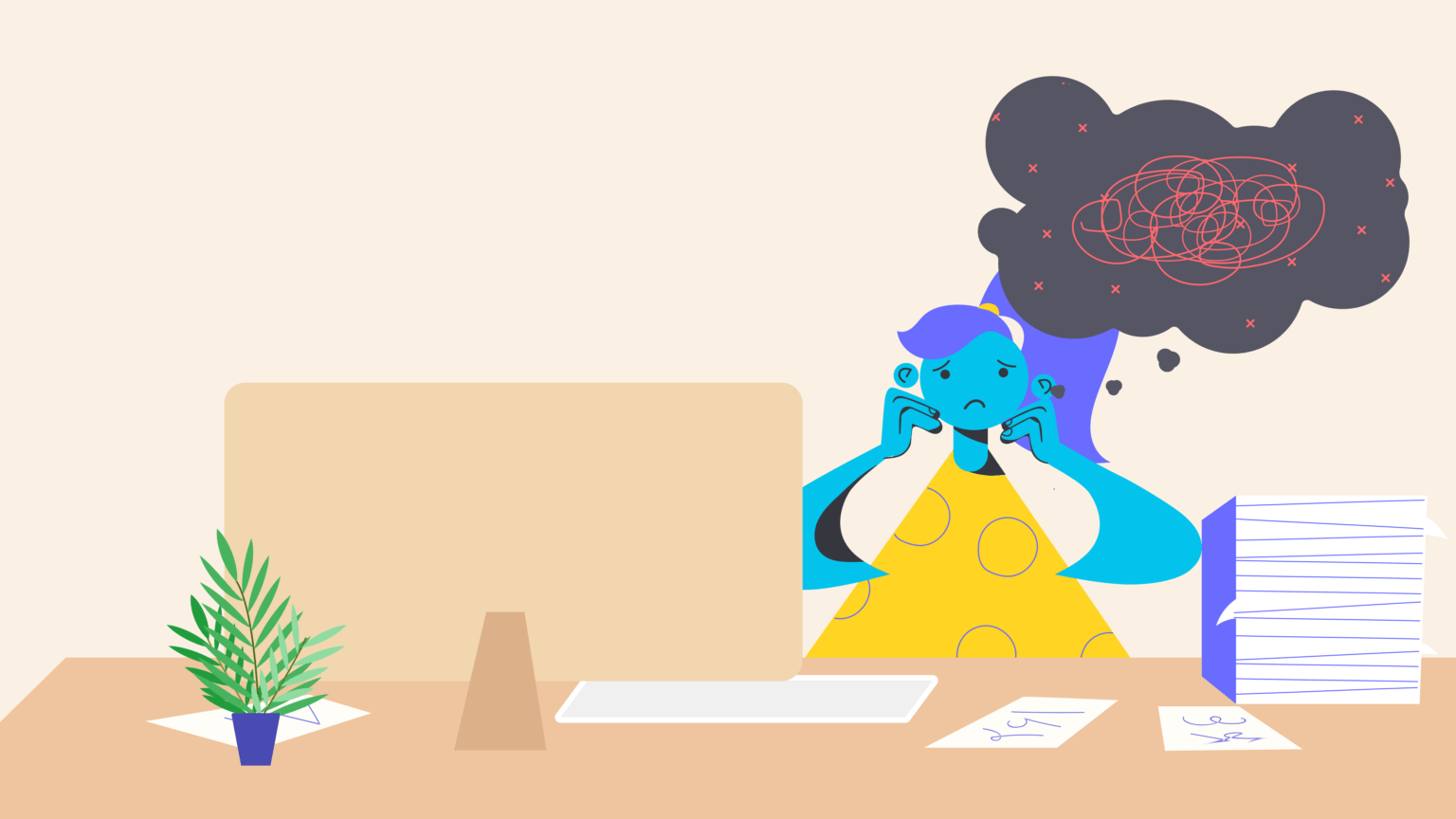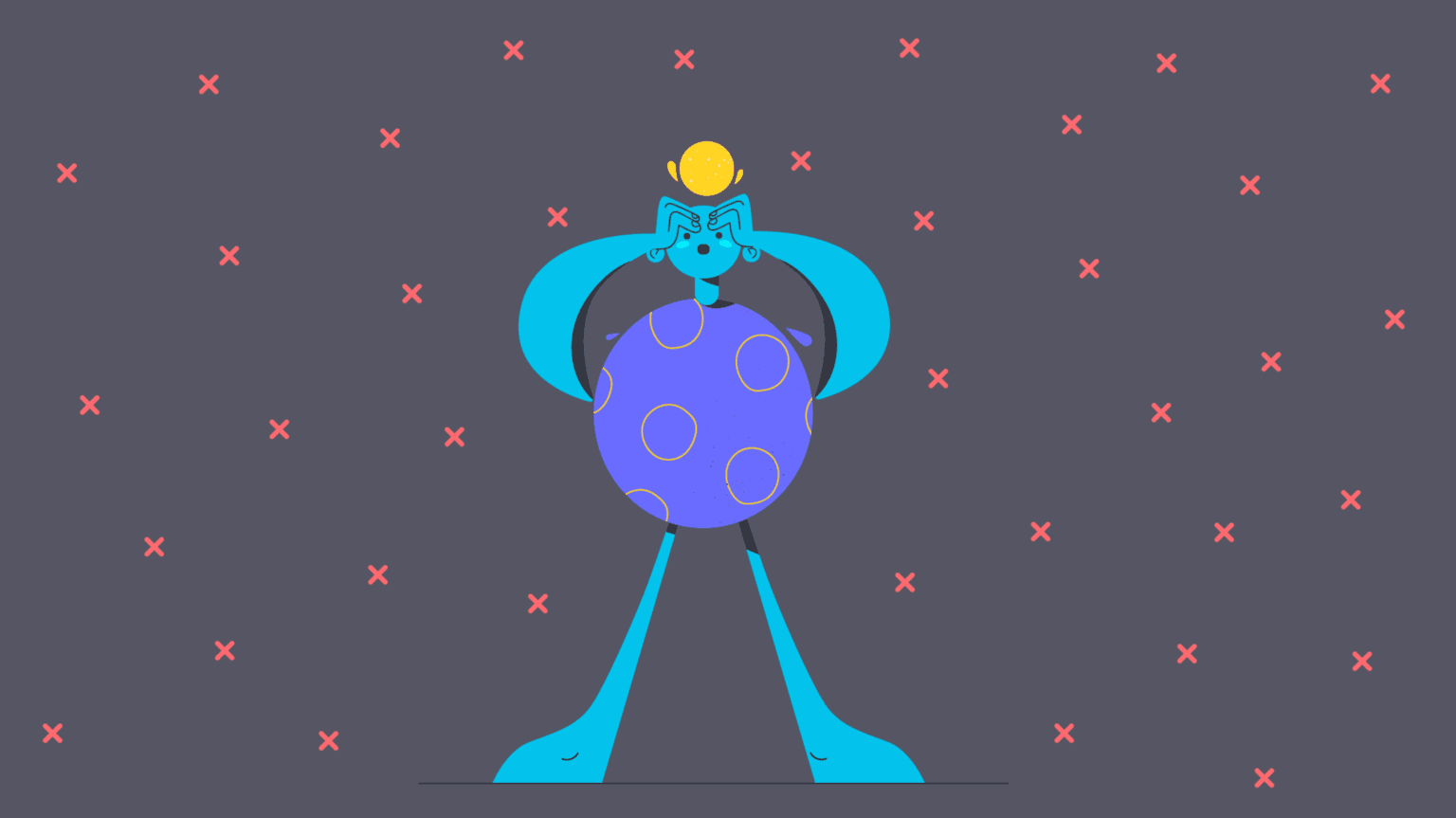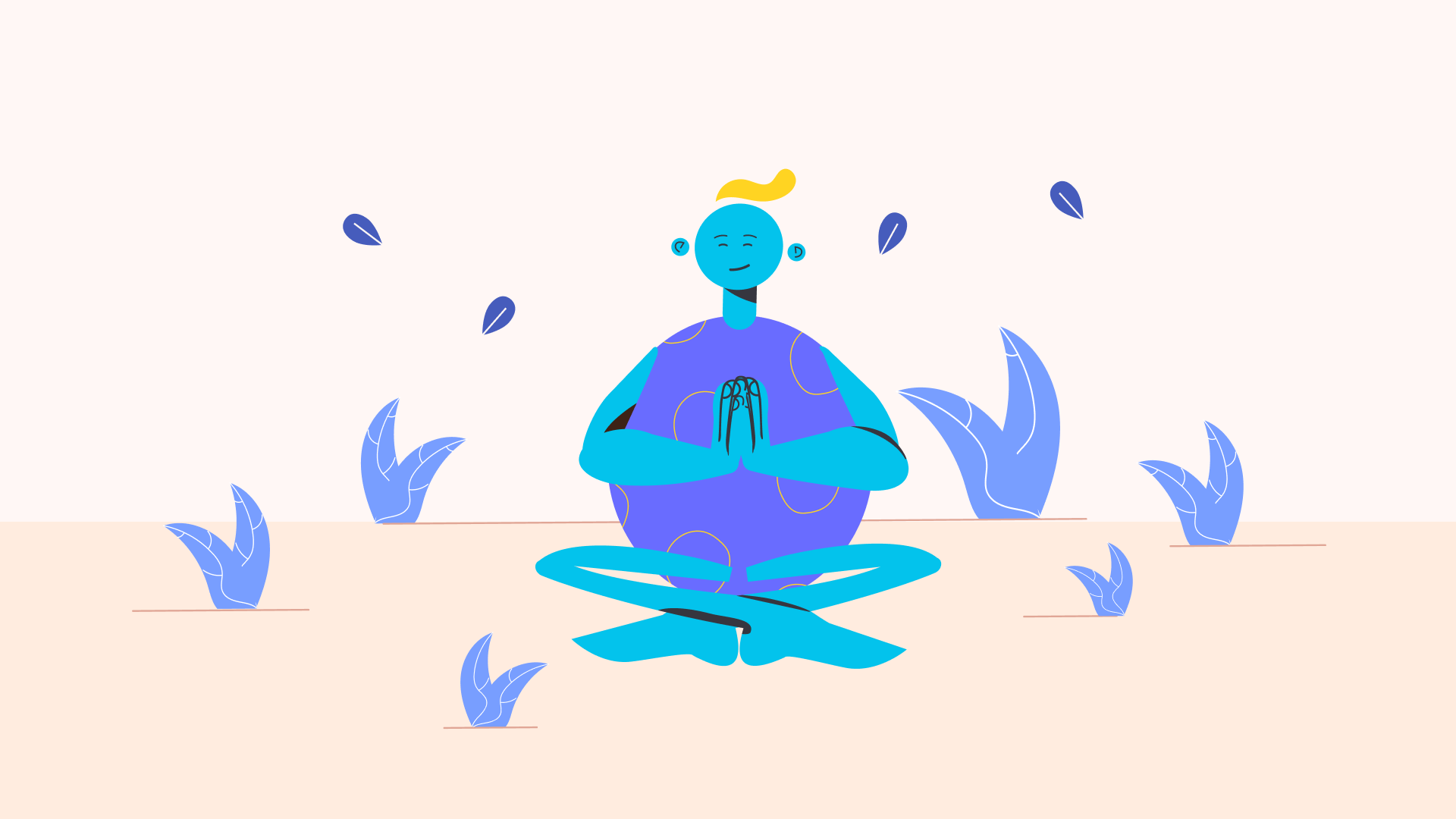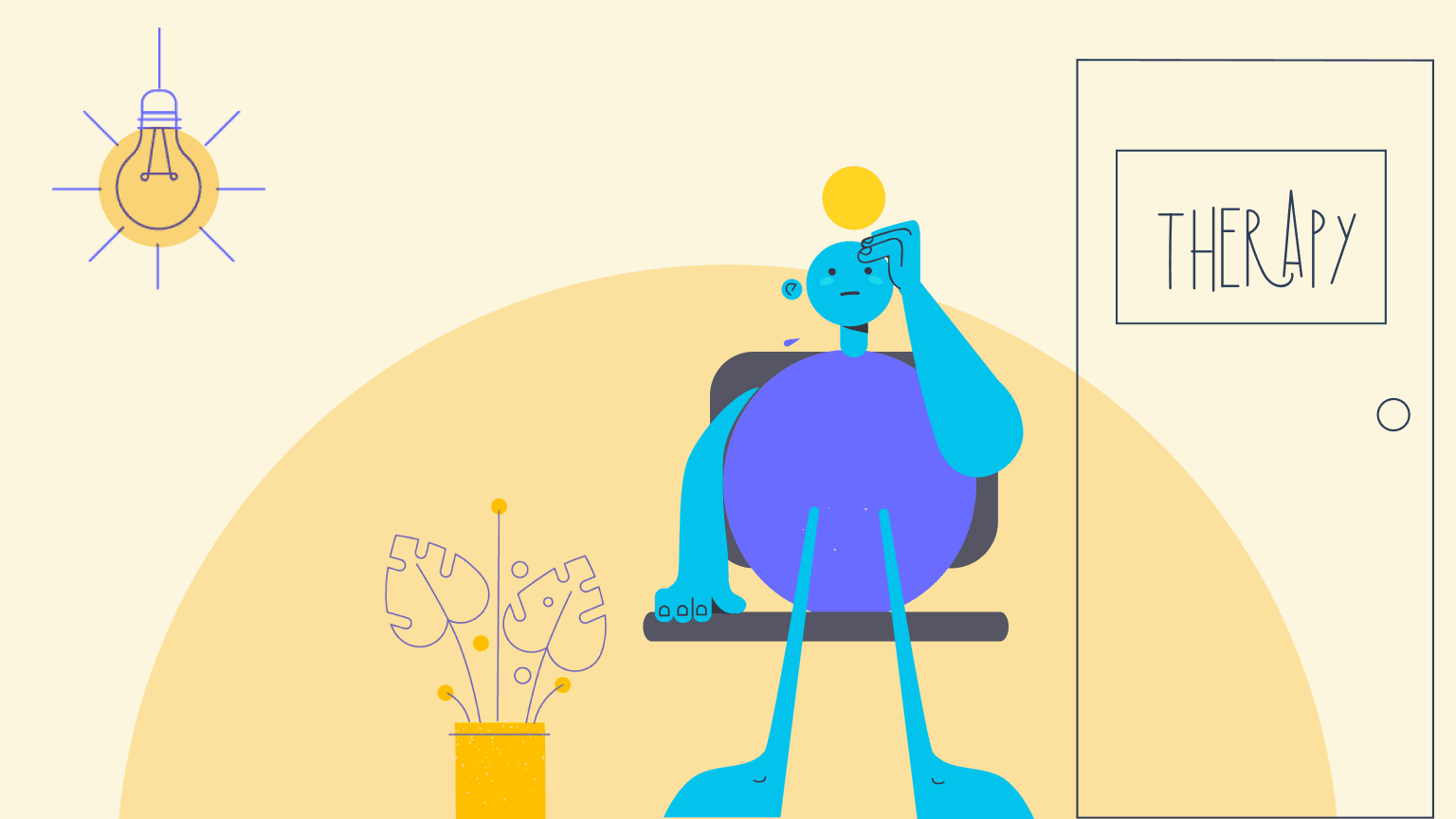Panic Attacks at Work - When Anxiety Dominates Your Workday

An important presentation, a spontaneous meeting at the office, or a small mistake – and the tension rises. Racing heart, dizziness, hot flashes: panic attacks at work are distressing, but not dangerous. Learn what helps in acute moments, which tips support you in everyday life, and when professional help is advisable.
One in five people will experience at least one panic attack in their lifetime. Many people are caught off guard, but there are usually triggers: stress, overwhelm, performance pressure, or social anxiety.
These factors often have a particularly strong effect in the workplace. Some people additionally develop the "fear of fear" – the constant worry that a panic attack could strike at any moment.
In this article, you'll learn:
- First aid for panic attacks on the job
- Tips for everyday life
- When professional help is important
First Aid for Panic Attacks at Work
A panic attack can feel overwhelming. Typical symptoms include racing heart, sweating, trembling, or chest pain. Some people feel like they're losing control or even dying. As unpleasant as this is, there's good news: a panic attack typically subsides on its own after about ten minutes.
What helps and what doesn't?
Many people try to suppress their anxiety through distraction. In the short term, this can help – but in the long run, it reinforces the fear of future panic attacks. You can learn why this is the case in the article: What to Do About Panic Attacks. In the next section, we'll share strategies that can truly help you in your work life.
3 Tips for Panic Attacks at Work
After an attack, many people want to do everything they can to prevent it from happening again. This is completely understandable. The problem: the constant fear of another attack increases your stress level – which can actually raise the risk of further panic attacks.
Three proven strategies that can help you:
1. Get enough exercise
Stress is a common trigger for panic attacks. Exercise has been proven to help reduce stress. Take a walk during your lunch break, take the stairs instead of the elevator, or actively seek out conversations with colleagues.
2. Keep a journal
You don't need a traditional diary – a simple notepad will do. Record when you had a panic attack or felt uneasy and what triggers there were. This helps you recognize patterns and better understand your anxiety. After an attack, reflect: did your fears actually come true? Were the consequences as bad as you thought? Usually, you'll find that the worst-case scenario doesn't happen – and the anxiety decreases.
3. Seek support in your work environment
Confide in a colleague. Even brief conversations can provide security – and studies show that ten minutes of conversation per day can significantly reduce stress.
If you feel overwhelmed or if your panic attacks are related to your workplace, talk to your supervisor. Schedule a meeting, note down your points beforehand, and consider possible solutions.
If this is too difficult, you can also reach out to the works council. What's important: if your well-being is suffering, no one benefits.
Professional Help for Recurring Panic Attacks
Stress and strain at work can contribute to mental illnesses such as depression or anxiety disorders. To prevent panic attacks from becoming a chronic burden, it's important to seek support early. Here's where you can turn.
-
Medical evaluation: Your general practitioner can be the first point of contact. In most cases, your doctor is already familiar with your medical history and can assess what support you need. First, it's important to have your physical health checked to rule out any physical causes for symptoms like racing heart or dizziness. After that, your doctor can recommend further steps.
-
Psychotherapy: If panic attacks or the fear of fear significantly impair your daily life, psychotherapy can help you regain control in the long term. Your health insurance will support you in finding a suitable therapy placement.
-
Digital support: Today, there are more and more digital offerings such as Digital Health Applications (DiGA) that can help people manage their anxiety. For panic disorder and agoraphobia specifically, there's the DiGA Mindable: Panic & Agoraphobia. DiGAs offer flexible support in everyday life. They can educate you about anxiety and provide initial exercises to help you overcome your fear. Learn more about DiGA here: DiGA. What Is It Actually?
Tip: You'd like support managing your panic attacks, but no therapy spot is available? Mindable: Panic & Agoraphobia can help you flexibly without waiting times, directly from home. The costs are fully covered by your health insurance. Learn more here: Mindable: Panic & Agoraphobia.
In Summary...
- Panic attacks at work are distressing, but not dangerous. They typically subside on their own after a few minutes.
- Exercise, self-reflection, and social support in the work environment can help reduce anxiety.
- Act early: If panic attacks severely limit your daily life, you should seek professional help.
- Digital support like Mindable: Panic & Agoraphobia can help you immediately – flexibly, from home, and with costs covered by your health insurance.
Mental health is the foundation for quality of life – and that's exactly what we stand for at Mindable. Follow us on Instagram to receive regular insights and tips on anxiety management.
Sources
American Psychiatric Association. (2013). Anxiety disorders. In Diagnostic and statistical manual of mental disorders (5th ed.).
Melchior, M., Capsi, A., Milne, B., Danese, A., Poulton, R., & Moffitt, T. (2007). Work stress precipitates depression and anxiety in young, working women and men. Psychological Medicine, 37(8), 1119-1129. doi: 10.1017/s0033291707000414
Osland, K., Malouff, J., & Alford, W. (2005). Effects of Person-Centered Psychological Assistance on Workers in Stressful Jobs. The Person Centered Journal, 12.
Robert Koch Institut, Statistisches Bundesamt. (2004). Gesundheitsberichterstattung des Bundes Heft 21.




